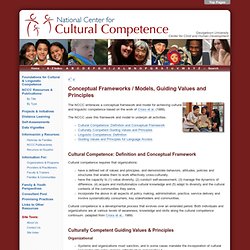

Inequities_in_Early_Childhood_Development_LoRes_PDF_EN_02082012.pdf. Www.cdacouncil.org/storage/documents/Diversity-WhitePaper_final.pdf. Www11.georgetown.edu/research/gucchd/nccc/documents/Checklist.EIEC.doc.pdf. Around the rainbow parent tool kit. Bilingual program. There is a very promising program that is just getting off the ground in our schools.

It’s called the Foreign Language Academy of Glendale, and it is based on a very educationally sound objective. Children who learn more than one language are better students, get better jobs and are generally better equipped to function in a world where knowledge of multiple languages is at a premium. We’d like to eventually have all of our children in all of our schools be bilingual. English, of course, remains the centerpiece of language instruction in each and every school, but there is very solid evidence, based on mountains of research, that being bilingual provides an undeniable advantage to all of our students.
Before mentioning exactly what those advantages are, I want to be clear on one thing. Cultural and Linguistic competency - checklist. Culturally responsive pedagogy. Communicating with children and families. Working with Refugee families. Providing extra support. Earlychildhood NEWS - Articles. Encouraging Cultural and Linguistic Diversity in your service - CareforKids.com.au ® Encouraging Cultural and Linguistic Diversity in your service In a proudly multicultural society such as our own it is very important that child care providers have the resources, skills and knowledge necessary to help children from culturally and linguistically diverse backgrounds, including indigenous backgrounds, settle into a care environment.

Ensuring your centre is well equipped to handle applications from families from culturally and linguistically diverse backgrounds and designing orientation programs designed to help these children ease into their new care arrangement will help you build a strong relationship with the children and their families. Employing a range of strategies designed to encourage awareness and understanding of cultural and linguistic diversity among the other children and families in your service will further enhance the experience for the new families and will foster a wider appreciation of the value of difference. Children's Services Central NSW. Achieving outcomes for CALD children and families. Culturally appropriate support for child protection families. A sense of belonging. Www.community.nsw.gov.au/docswr/_assets/main/documents/research_cald_oohc_review.pdf.
Family involvement - oSHC. Exploring Multiculturalism, anti bias... Culturally Inclusive service assessment tool. Feminist Ethics. First published Tue May 12, 1998; substantive revision Mon May 4, 2009 Feminist Ethics is an attempt to revise, reformulate, or rethink traditional ethics to the extent it depreciates or devalues women's moral experience.

Among others, feminist philosopher Alison Jaggar faults traditional ethics for letting women down in five related ways. First, it shows less concern for women's as opposed to men's issues and interests. Second, traditional ethics views as trivial the moral issues that arise in the so-called private world, the realm in which women do housework and take care of children, the infirm, and the elderly. Third, it implies that, in general, women are not as morally mature or deep as men.
Feminists have developed a wide variety of gender-centered approaches to ethics, each of which addresses one or more of the five ways traditional ethics has failed or neglected women. 1. Catherine Beecher was among this group of thinkers. Children's Books, Picture Books and Audio Books for all Languages and Cultures. Analyze Classrooms for an Anit-Bias Approach. Diversity and difference – 2. Conceptual Frameworks / Models, Guiding Values and Principles.
The NCCC embraces a conceptual framework and model for achieving cultural and linguistic competence based on the work of Cross et al. (1989).

The NCCC uses this framework and model to underpin all activities. Cultural Competence: Definition and Conceptual Framework Cultural competence requires that organizations: have a defined set of values and principles, and demonstrate behaviors, attitudes, policies and structures that enable them to work effectively cross-culturally. have the capacity to (1) value diversity, (2) conduct self-assessment, (3) manage the dynamics of difference, (4) acquire and institutionalize cultural knowledge and (5) adapt to diversity and the cultural contexts of the communities they serve. incorporate the above in all aspects of policy making, administration, practice, service delivery and involve systematically consumers, key stakeholders and communities. Cultural competence is a developmental process that evolves over an extended period. Organizational Footnotes. What Works - The Work Program - Improving Outcomes for Indigenous students.
What Works.

The Work Program is a set of materials for those working in schools. It is designed to assist them to plan and take action to improve educational outcomes for Australian Indigenous students. In hundreds of schools, Indigenous students are present in small numbers. Other schools have larger numbers, and in some remote locations the whole population may be Indigenous. What Works. This website is organised around a three step process of. The Costume Page - Ethnic & Folk Costume.
Multicultural SA Website. UN Declaration of Human Rights. About inclusion-the benefits.